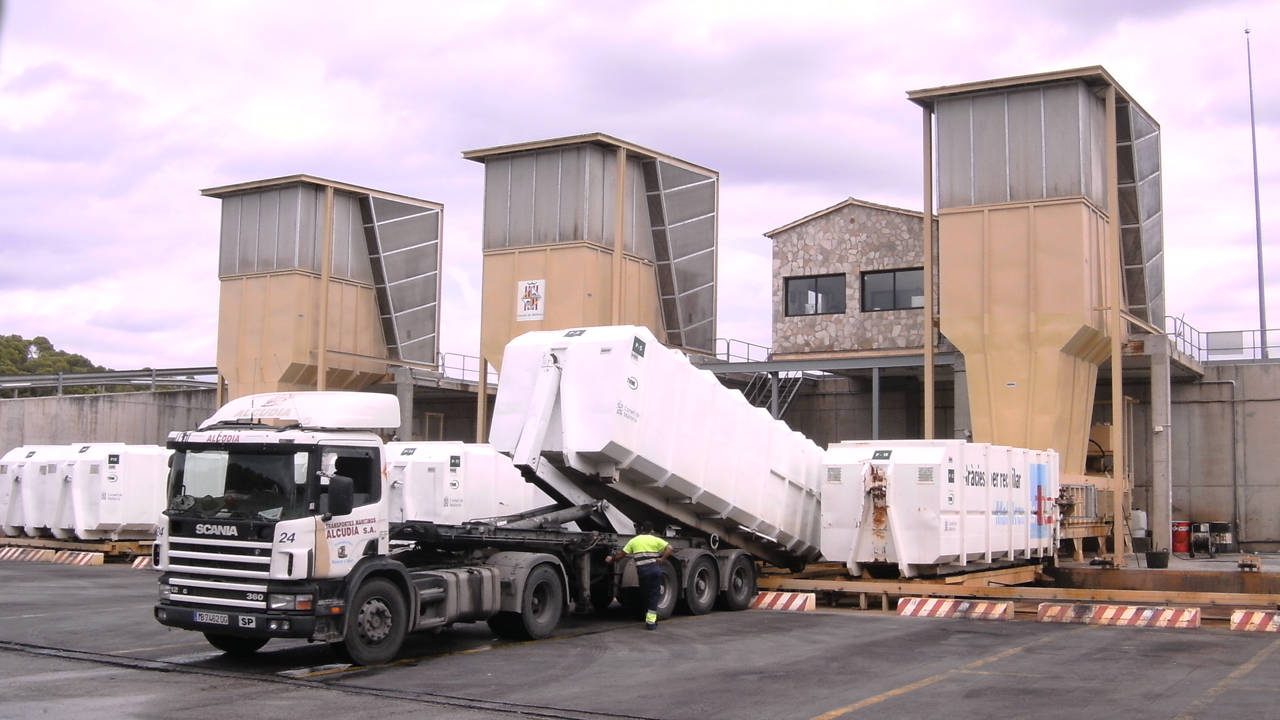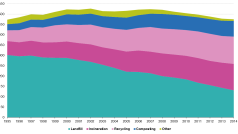This provided for the operation and management of five waste transfer stations situated around the circumference of the island for the local municipalities to deliver their municipal solid waste to in refuse collection vehicles and then for further transhipment for subsequent disposal. The waste transfer stations are situated at Calvia, Manacor, Binisalem, Alcudia and Campus.
At this time, Mallorca was still utilising its existing two Landfill Sites: one close to SOLLER which served the communities of Palma and the latter landfill situated near to MONACOR which now mostly only handles C & D category waste.
When the new contract commenced with TIRME SA, a planning application had already been submitted to design, build and operate a new waste to energy facility for the Island of Mallorca. The projected site proposal was one adjacent to the existing landfill site in SOLLER. This proposal was put to the Consell of Mallorca on the basis of changing legislation regarding the EU Landfill directive and future and forthcoming legislation relating to the diversion of waste from sanitary landfill and the quest for recycling of natural resources.
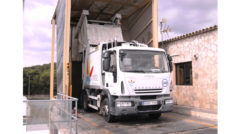
The new EFW plant was built adjacent to the existing landfill site. This involved both planning permission and the proximity principle being taken into account. The new waste to energy facility would consist of two Babcock Volund roller type grates to handle municipal solid waste with a capacity of 18’75 tonnes an hour.
In 2010, the energy from waste plant was expanded with the commissioning of two Hitachi Zosen Inova water cooled moving grates which each have a throughput of 30 tonnes per hour. A new tipping hall was constructed for the additional two lines and the plant expansion can now deal with municipal and commercial waste, biomass, sewage sludge and waste tyres of small quantities.
The facility also supplies electricity to the national grid through a Mitsubushi and Siemens turbine. The overall throughput of the energy from waste facility is now 800,000 tonnes per annum and since the plants expansion, has ended the use of landfill for municipal and commercial waste on the island of Mallorca.
Once the initial construction phase was implemented in 1994, FCC bought shares into the facility and won the contract to construct the new waste to energy facility together with construction partner Dragados and then handed the operation concession back to Tirme SA which named the new facility SON REUS. It was handed over to Tirme as a turnkey facility.
FCC was also involved in building the new waste transfer stations and utilised the Marrel static compactor design to be compliant with the loading of municipal waste into the compactor type hermetic enclosed roll-on-off containers.
The energy from waste plant Son Reus became operational in 1997 after going through the commissioning stage in 1996 and then the new waste transfer stations were utilised.
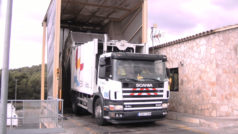
Bottom ash from the incineration process is utilised in the construction sector and is crushed to a type two specification material for use in construction / building projects. The air pollution control residues are disposed of on site at a specially designed landfill and in special cells where it is covered in mortar to prevent any volatile organic compounds or fugitives being released from the ashes
Tirme SA (the contractor in Mallorca) decided, as a result of tests across other EU member states about air pollution control residues arising from energy from waste plants to bury the incinerator bottom ash mixed in mortar in a hazardous lined landfill on site. This eradicates the issues which surround the air pollution control residues produced from energy from waste plants
Planning permission was granted in 2007 for an additional two lines of the Von Roll Inova type at a sister energy from waste plant being constructed adjacent to the existing facility.
As with most areas in Spain, waste is collected at night but the energy from waste facility is operational 24 hours a day and 365 days a year while the transfer stations are open also 24 hours a day. In the daytime they take smaller quantities of waste from small private contractors and some deliveries of municipal waste when a particular municipality e.g. Calvia 2000 or EMCA 2002 operate a morning and night collection of MSW and also FCC in the Municipality of Santanyi.
The bulk of the municipal waste deliveries relate to night time collection from 10.00 pm onwards. The refuse collection vehicles reverse to the edge of the hopper situated above the static compactor and discharge their load into it.
The static compactor utilises 40yrd roll-on-off containers, again of the Marrel type, so they can hold an approximate net payload of around twenty five tonnes of municipal waste. Once the waste has been compressed into them, the containers are hermetic and totally sealed. These systems have since been implemented in the U.K. by FCC in partnership with Urbaser SA at Severn Waste in Worcestershire.
As part of a separate contract, the transportation of the municipal waste from the five transfer stations around Mallorca to the energy from waste facility Son Reus was signed with ALCUDIA SA. This company utilises a semil trailer fitted with hook loader equipment which is then pulled by a tractor unit fitted with the necessary hydraulics to operate the hook loader system fitted to the semitrailer.
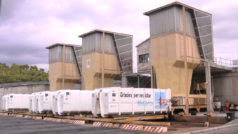
Once one compaction container is full, it is released from the aperture of the static compactor and is then mechanically moved on a traverse moving frame. The full container will move to the right while another empty roll on off container will move from the left and line up to the aperture. It will be fixed in situ for further loading from above from the refuse collection vehicles discharging their loads into the hopper. Sometimes the refuse collection vehicles have to wait up to ten minutes while an exchange container is fitted in situ from the full one.
The staff who work at these transfer station facilities follow all of the European health and safety guidelines: they wear all of the correct personal protective equipment on site, for example, hard hat, fluorescent vest and boots steel toe capped.
In conclusion, the waste transfer system in Mallorca is well planned logistically as by utilising the five transfer stations around the island it is reducing the number of vehicle movements by more than 66% to the waste to energy plant Son Reus and therefore reduces the carbon footprint.


